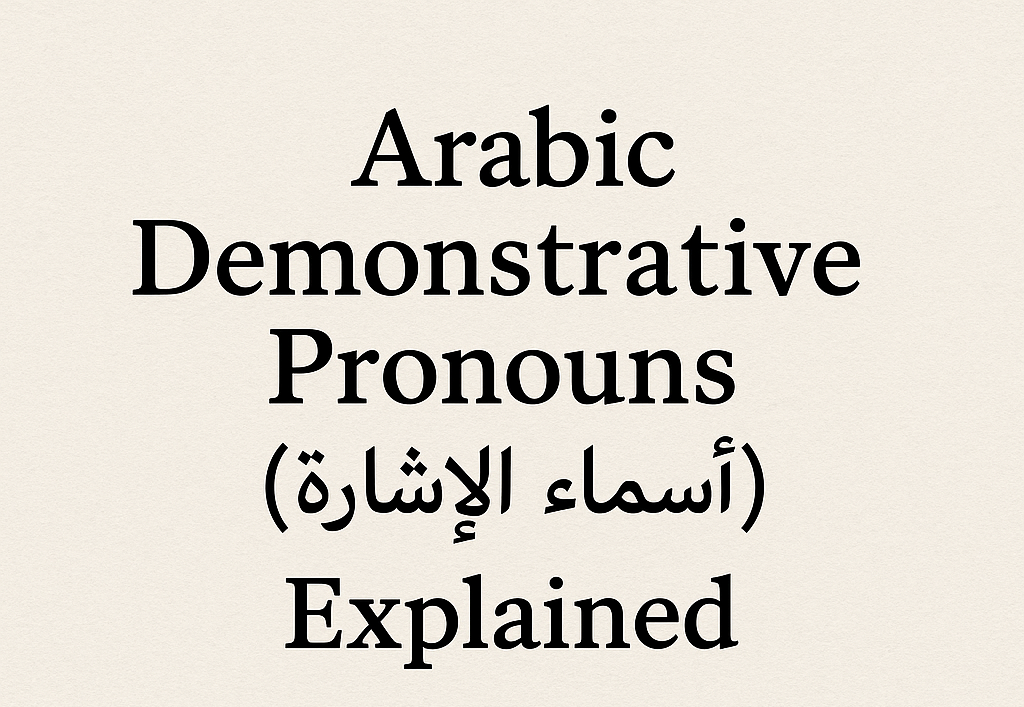Arabic Demonstrative Pronouns (أسماء الإشارة) Explained

When learning Arabic, one of the essential building blocks to master is Arabic Demonstrative Pronouns (أسماء الإشارة). These pronouns are key to pointing out specific objects, people, or places in conversation and writing. Understanding how to use أسماء الإشارة correctly will greatly improve your fluency and comprehension of Arabic, whether you are a beginner or at an intermediate level.
In this comprehensive guide, we will explain what Arabic Demonstrative Pronouns (أسماء الإشارة) are, how they function in sentences, their different forms, and useful tips to master them easily. By the end of this post, you will have a clear understanding of Arabic Demonstrative Pronouns (أسماء الإشارة) and be able to confidently use them in your Arabic speaking and writing.
What Are Arabic Demonstrative Pronouns (أسماء الإشارة)?
In Arabic grammar, أسماء الإشارة are pronouns used to indicate or point to something specific. They function similarly to English demonstratives like this, that, these, and those. However, Arabic demonstratives are more complex because they change based on gender (masculine/feminine), number (singular/dual/plural), and sometimes proximity (near/far).
For example, in English, you say:
-
This book (near, singular)
-
That book (far, singular)
-
These books (near, plural)
-
Those books (far, plural)
In Arabic, demonstrative pronouns do the same job but are expressed differently depending on gender and distance.
Why Learn Arabic Demonstrative Pronouns (أسماء الإشارة)?
Mastering Arabic Demonstrative Pronouns (أسماء الإشارة) is important because:
-
They help specify objects and people clearly in communication.
-
They are essential for forming proper sentences and making your meaning precise.
-
They are commonly used in everyday conversation and formal writing.
-
They serve as a foundation for learning more complex grammatical structures in Arabic.
At Al Arabiya Institute, we emphasize teaching these fundamentals in our online Arabic courses, making it easy and effective for learners to grasp Arabic Demonstrative Pronouns (أسماء الإشارة) and other grammar topics.
The Main Types of Arabic Demonstrative Pronouns (أسماء الإشارة)
Arabic demonstrative pronouns are mainly divided into two categories based on proximity:
1. Near Demonstrative Pronouns (اسم الإشارة القريب)
These pronouns refer to something close to the speaker. They are equivalent to this or these in English.
2. Far Demonstrative Pronouns (اسم الإشارة البعيد)
These pronouns refer to something far from the speaker, equivalent to that or those in English.
Arabic Demonstrative Pronouns (أسماء الإشارة) Table
Below is a basic table summarizing the most common Arabic Demonstrative Pronouns (أسماء الإشارة) by gender and number:
| Proximity | Masculine Singular | Feminine Singular | Masculine Dual | Feminine Dual | Masculine Plural | Feminine Plural |
|---|---|---|---|---|---|---|
| Near | هذا (hādhā) | هذه (hādhihi) | هذانِ (hadhāni) | هاتانِ (hātāni) | هؤلاء (hā’ulā’) | هؤلاء (hā’ulā’) |
| Far | ذلك (dhālika) | تلك (tilka) | ذانِك (dhānika) | تانِك (tānika) | أولئك (’ulā’ika) | أولئك (’ulā’ika) |
Explanation:
-
هذا (hādhā) means “this” (masculine singular near).
-
هذه (hādhihi) means “this” (feminine singular near).
-
ذلك (dhālika) means “that” (masculine singular far).
-
تلك (tilka) means “that” (feminine singular far).
-
هذانِ (hadhāni) means “these two” (masculine dual near).
-
هاتانِ (hātāni) means “these two” (feminine dual near).
-
ذانِك (dhānika) means “those two” (masculine dual far).
-
تانِك (tānika) means “those two” (feminine dual far).
-
هؤلاء (hā’ulā’) means “these” (plural near for both genders).
-
أولئك (’ulā’ika) means “those” (plural far for both genders).
How to Use Arabic Demonstrative Pronouns (أسماء الإشارة) in Sentences
Arabic Demonstrative Pronouns (أسماء الإشارة) agree in gender and number with the noun they point to. Here are some examples:
-
هذا كتابٌ جديدٌ
Hādhā kitābun jadīdun
This is a new book. (masculine singular) -
هذه سيّارةٌ سريعةٌ
Hādhihi sayyāratun sarī‘atun
This is a fast car. (feminine singular) -
هؤلاء الطلاب مجتهدون
Hā’ulā’ al-ṭullāb mujtahidūn
These students are hardworking. (plural) -
تلك المدرسة بعيدة
Tilka al-madrasatu ba‘īdah
That school is far. (feminine singular, far)
Notice how the demonstrative pronoun changes according to the noun’s gender and number.
Additional Tips for Mastering Arabic Demonstrative Pronouns (أسماء الإشارة)
-
Practice gender agreement: Make sure the demonstrative pronoun matches the gender of the noun it refers to.
-
Use context: Sometimes demonstrative pronouns imply proximity or distance metaphorically (not just physical distance).
-
Pay attention to dual forms: Arabic is unique in having dual pronouns, which is different from English.
-
Listen and repeat: Hearing Arabic Demonstrative Pronouns (أسماء الإشارة) used in context helps solidify your understanding.
At Al Arabiya Institute, our courses include plenty of practical exercises and spoken drills to help learners master these pronouns quickly.
Common Mistakes Learners Make with Arabic Demonstrative Pronouns (أسماء الإشارة)
-
Confusing near and far demonstratives: Remember هذا vs ذلك and هذه vs تلك.
-
Ignoring gender agreement: Using masculine demonstrative pronouns with feminine nouns or vice versa.
-
Not using the dual forms correctly: Dual is an important grammatical number in Arabic.
-
Using plural forms improperly: Plural demonstratives are for groups, not individuals.
Our expert instructors at Al Arabiya Institute focus on correcting these mistakes early to help students build strong foundational grammar skills.
Why Choose Al Arabiya Institute to Learn About Arabic Demonstrative Pronouns (أسماء الإشارة)?
Learning Arabic Demonstrative Pronouns (أسماء الإشارة) correctly can be challenging without proper guidance. Al Arabiya Institute offers the best online Arabic courses, designed to make your Arabic learning journey smooth, interactive, and affordable.
What Makes Al Arabiya Institute Stand Out?
-
Expert teachers: Our instructors are highly qualified native Arabic speakers experienced in teaching all levels.
-
Comprehensive curriculum: From basics like demonstrative pronouns to advanced Arabic grammar.
-
Flexible schedules: Learn anytime, anywhere, with live online lessons tailored to your needs.
-
Best prices: Affordable courses with free trial lessons to start learning risk-free.
-
Interactive approach: Use real-life examples and engaging activities for practical learning.
You can begin mastering Arabic Demonstrative Pronouns (أسماء الإشارة) and other essential grammar topics with us today!
Conclusion
Mastering Arabic Demonstrative Pronouns (أسماء الإشارة) is a critical step toward fluency in Arabic. These pronouns help you express specific ideas about people, objects, and places clearly and accurately. By understanding their forms, uses, and agreement rules, you will greatly enhance your Arabic speaking, reading, and writing skills.
If you want expert guidance on Arabic Demonstrative Pronouns (أسماء الإشارة) and other Arabic grammar topics, visit Al Arabiya Institute — one of the best websites for learning Arabic online. With the best prices and free trial lessons, it’s the perfect place to begin or continue your Arabic language journey.
Start learning Arabic today with Al Arabiya Institute at https://learning-arabic.com/. Unlock the power of Arabic Demonstrative Pronouns (أسماء الإشارة) and much more with our professional online courses!
👉 Visit Al Arabiya Institute and book your free trial lesson now!







